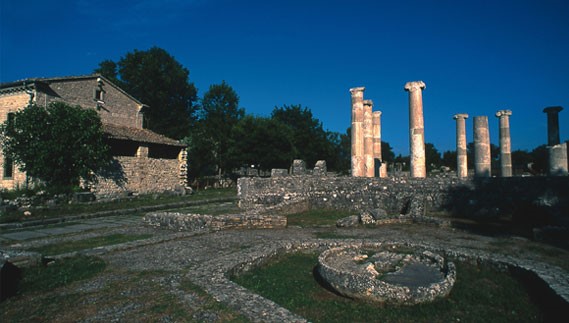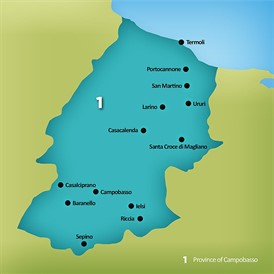

Campobasso
Province of Campobasso
The history of the Province of Campobasso and its geographical location have enabled many museums of different typology to open...
From Sanniti civilization to contemporary art
The history of the Province of Campobasso and its geographical location have enabled many museums of different typology to open, with archaeological and ethnographic-anthropological ones becoming dominant. The presence of Sanniti, Italic civilization from the pre-Roman period, is vividly represented in the two major museum establishments: Altilia Museum situated within the Altilia archeological site, and the Provincial Museum of Sanniti. Especially the latter one, in addition to the Sanniti civilization, represented by bronze and stone votive statues, covers a long chronological period – from prehistory, Roman period until the Late Middle Ages. This is also the most significant museum structure of the province and will be valorized within the AdriaMuse project. Another museum that will be included in this project is the Civic Museum of Baranello. It was established at the end of the 19th century owing to its rich and diverse collection of various objects based on the Wunderkammern model of the Renaissance type.
There are ethnologic-anthropological museums in many of the communes of the Province, which are mostly directed towards presenting rural culture. The museum that surely stands out for its originality is the open-air museum of rural civilization from Casalciprano, where exhibits are displayed in local streets, thus reviving old customs and traditions for visitors. Contemporary art is also adequately presented in Campobasso, especially with the open-air museum Kalenarte in Casacalenda, Sacrocam Museum in Santa Croce di Magliano and the Contemporary Art Gallery in Termoli.











